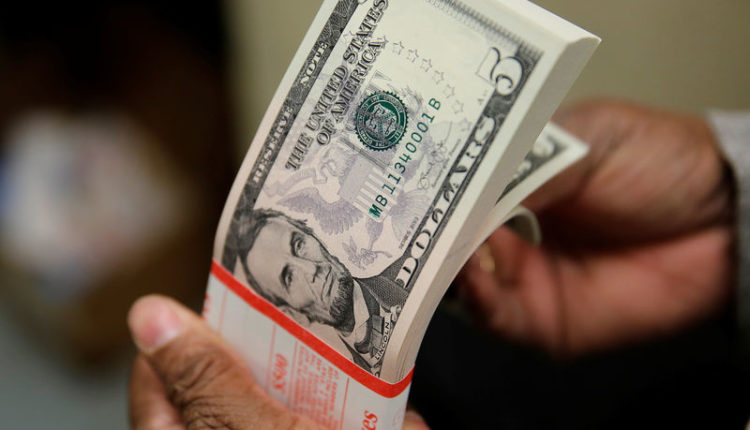Dollar holds onto gains, but sentiment remains fragile
By Stanley White
TOKYO (Reuters) – The dollar held onto gains on Friday after a surge in U.S. retail sales eased concerns about the world’s top economy, but traders cautioned against reading too much into one piece of data given the growing risks to the outlook.
The greenback was on course for a weekly gain against safe-haven currencies such as the Japanese yen and the Swiss franc, pointing to some respite for frayed nerves after fears of recession and protests in Hong Kong rattled financial markets.
Data showing American consumers continued to splurge in July came as a relief to investors after the U.S. bond market sounded alarms of a recession.
Yet, the fragile calm in markets is unlikely to last, traders said.
This week’s inversion in the U.S. Treasury yield curve, which has historically preceded several past U.S. recessions, has stoked fresh worries about the economic impact of the Sino-U.S. trade war.
China on Thursday vowed to counter the latest U.S. tariffs on $300 billion of Chinese goods, but U.S. President Donald Trump said any pact would have to be on America’s terms, suggesting a resolution to the trade war remains elusive.
Trump, who is seeking re-election in 2020 and had made the economy and his tough stance on China a key part of his 2016 campaign for the White House, said any agreement must meet U.S. demands.
More protests are also expected in Hong Kong over the weekend, which could become a new geopolitical flashpoint and further complicate the U.S.-China trade war.
“The most important point is there are more signs of a global economic slowdown,” said Tsutomu Soma, general manager of fixed income business solutions at SBI Securities in Tokyo.
“Rates will continue to fall, and investors will pull back from risk, which means money will leave emerging markets and go to Treasuries, the Swiss franc, gold, and the yen.”
The dollar was little changed at 106.11 yen early in Asian trading after rising 0.2% on Thursday.
For the week, the greenback was up 0.4% against the Japanese currency.
Against a basket of six major currencies, the dollar index (DXY) edged higher to 98.131. Since hitting a three-week low on Aug. 9, the dollar index has recovered, rising 1.1%
The dollar was marginally higher at 0.9767 Swiss franc , on course for a 0.4% weekly gain.
A day after inverting, the U.S. yield curve steepened a little. Curve inversion, which occurs when long-term yields dip below short-term yields.
Despite the steepening, yields continued to fall, with 30-year yields hitting record lows and 10-year yields sinking to a three-year trough.
Sterling was marginally higher, on course for its first weekly gain since mid-July, as positive data on retail sales and consumer pries showed the British economy is in better shape than some investors had feared.
The pound traded at $1.2111, close to a one-week high of $1.2150.
However, sterling bears are still on the ascendancy given the risk that Prime Minister Boris Johnson will take Britain out of the European Union without transitional trade agreements, potentially causing short-term economic turmoil.

